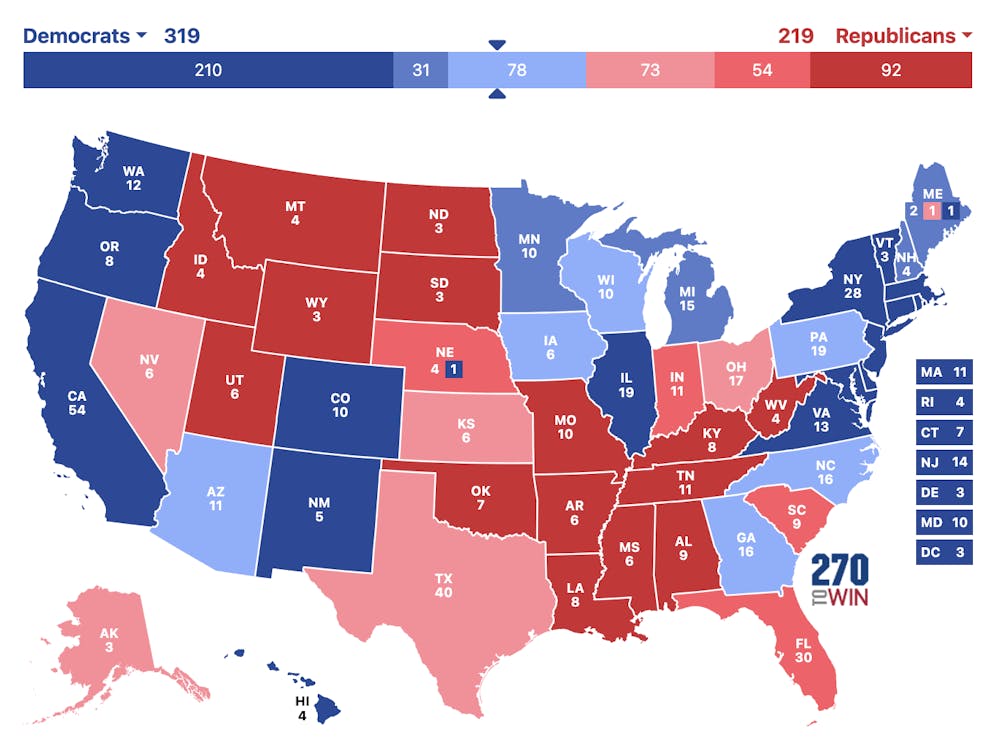Last Saturday, the best pollster in the country, Ann Selzer, showed Kamala Harris ahead by the three points in deep-red Iowa, a state Donald Trump beat Joe Biden by eight points. Selzer is one of the two best pollsters (along with The New York Times/Siena College) according to polling guru Nate Silver.
Selzer has often been the most bullish Iowa pollster on Trump and has been dead on every time, staying within one to two points of the final results. There are two possibilities: One, either Harris is set for a landslide as it would be highly unlikely that Iowa would be the only state to experience a strong blue shift while the rest of the country trends right, or two, Selzer has ruined her reputation as one of the best pollsters in the country.
Trump being down in deep-red Iowa all but guarantees his defeat. Certainly, in the Midwest and the Rust Belt, Trump should expect to lose ground everywhere from 2020 if he has lost 11 points in Iowa since. Wisconsin, Michigan and Pennsylvania have all voted 6-10 points left of Iowa in the Trump Era since 2016. I find it unlikely that they will vote to the right of Iowa in 2024.
Although the results of the Iowa poll have less applicability in North Carolina, Georgia and Arizona, I believe Selzer’s poll to be indicative of a nationwide shift. While some polls have not been so optimistic for Harris, Silver discussed how the statistical likelihood of all the polls being this close in results (when aggregated, they show a 50-50 tie between Harris and Trump) is roughly one in nine trillion, even if the race was a dead heat. Rather, polling firms are herding to the mean of other reputable pollsters to avoid embarrassment they experienced during the Trump Era.
Florida and Ohio are right-trending states so I do not believe Kamala Harris has any chance of victory there, and Democrats will likely lose some ground in Florida from 2020. Texas is a blue-trending state and is all but guaranteed to flip sometime in the next 20 years, but I’m not confident enough to give it to Harris yet.
Early voting trends have not revealed any clear trend, despite what pundits may claim. Early voting party/gender/race distributions often vary due to many external factors. For any given election, Republicans or Democrats could have an early voting advantage and the other could have an Election Day advantage. Additionally, counties like the suburbs of Texas or exurbs of Georgia could have feasibly experienced large shifts in party affiliation.
The map I have is separated into 6 categories: Safe Dem/GOP(+15<), Lean Dem/GOP (+5<), Tilt Dem (1-5). It is informed by some polling data, some prediction data (I have avoided betting markets like Kalshi and Polymarket), and certain measures that may be driving blue turnout in specific states (an unpopular GOP governor candidate, Mark Robinson, in North Carolina and an abortion amendment on Arizona’s ballot).
Maybe tonight, I will eat my words. Even polling gurus like Silver have missed hard in the past. Expect to see a piece about why I believe the winner of the election secured the necessary 270 electoral votes to win. Despite some recent controversy, election “nostradamus” Allan Lichtman, who has predicted 9 out of the last 10 elections, has predicted a Kamala Harris win.
Selzer’s poll and some recent New York Times polls informed my map. There is a good case for why voters prefer Trump and good case for Harris. My money’s on Selzer and Lichtman.





